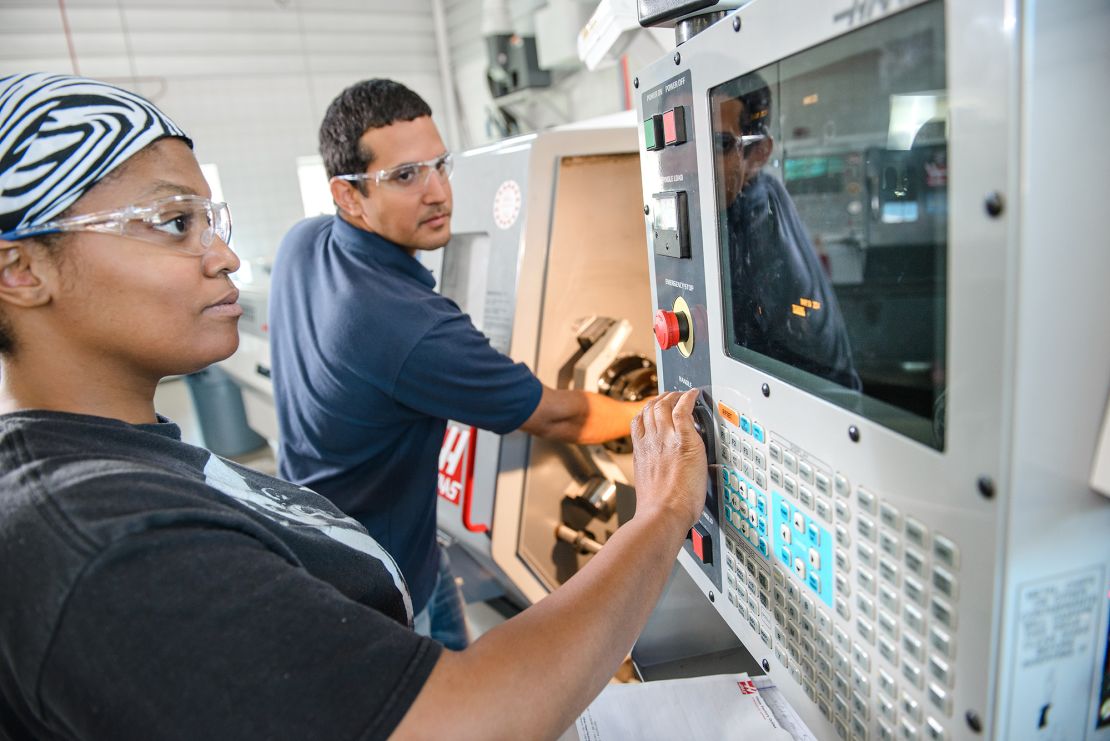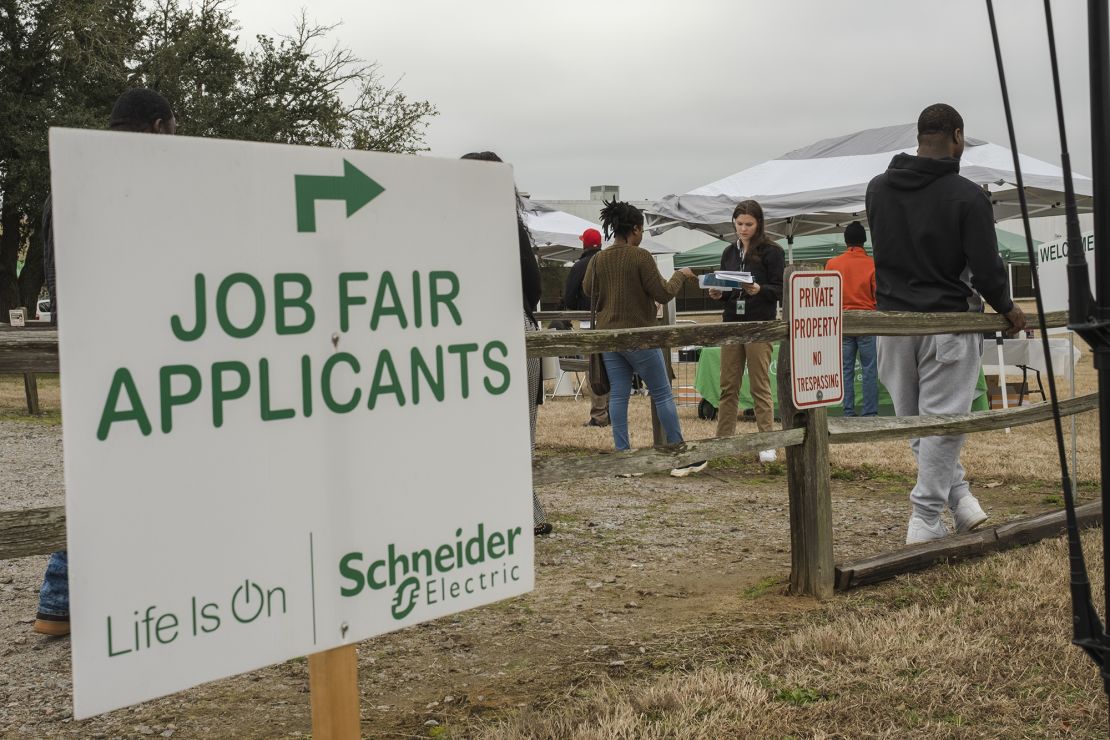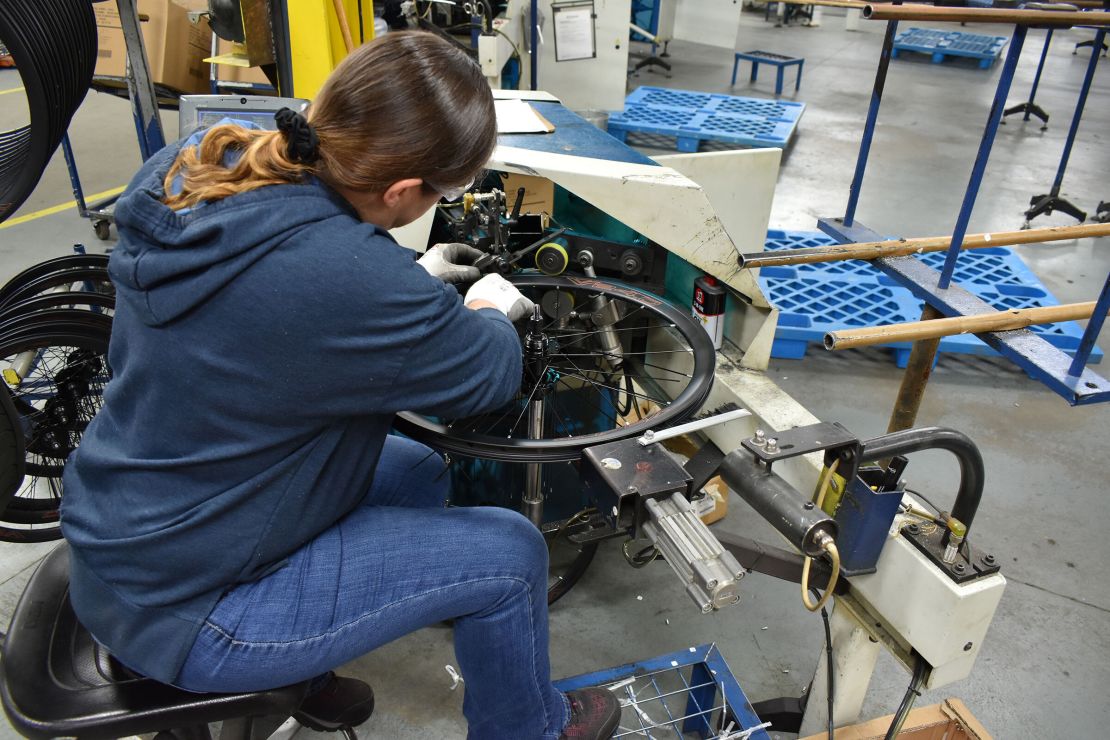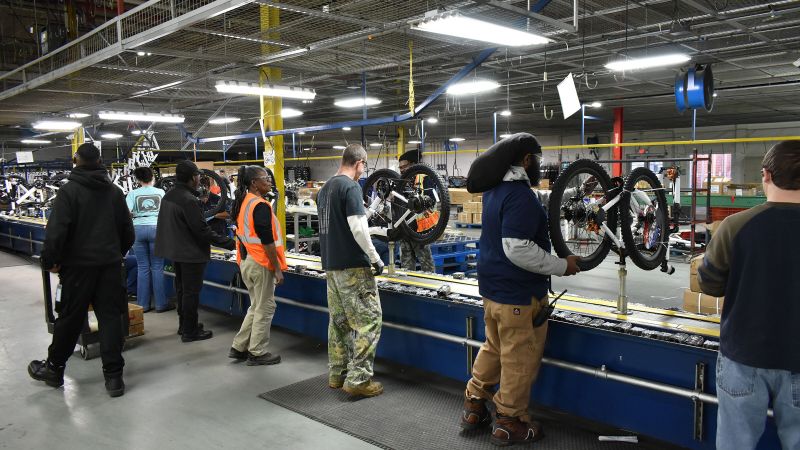The pandemic’s effect on South Carolina’s economy was palpable, but the fallout on employment didn’t cut as deep or last as long as it did nationally.
The Palmetto State entered 2024 from a position of strength: Key industries are booming, and the stars are aligning for the Southeastern state to capitalize on long-term migration patterns.
However, there are some very real obstacles for that growth to continue, namely aging demographics, worker shortages and high interest rates.
Here’s a snapshot of South Carolina’s economy as the state plays host to the latest 2024 presidential primary on Saturday.
In April 2020, unemployment spiked in South Carolina from 3.1% to 11.7%, the highest seen in the state since the Great Recession, when the jobless rate topped out at 12.1% in December 2009, Bureau of Labor Statistics data shows.
The US, on the other hand, saw its unemployment rate soar to 14.8% in April 2020.
By the end of 2020, South Carolina’s jobless rate was under 5%, while it took until September 2021 for the US to reach that level. As of December, the state’s unemployment rate was 3%.
“South Carolina opened up faster than many other states did, so businesses were able to rehire the employees they had to lay off, and more businesses were able to avoid going bankrupt,” Joseph Von Nessen, research economist at the University of South Carolina’s Darla Moore School of Business, told CNN.
Also helping to rev up the economic momentum was South Carolina’s positioning as a “drive-to state” and not a “fly-to state,” Von Nessen said.
“That meant our tourism economy, which is a significant component of the state, wasn’t as adversely affected as the tourism industries in some other states,” he said.
But it’s not a story solely about recovery, he added. It’s also about key industry sectors hitting full stride.
The state’s economic growth, which clocked in at a strong 5.7% rate in the third quarter of last year, was driven largely by two sectors: advanced manufacturing (automotive, tire and aerospace industries); retail and distribution (warehousing, ports and rail).
Those industry clusters combined have an estimated economic impact of $48.3 billion, having expanded more than 25% since 2010, and employ upward of 150,000 people, according to a study University of South Carolina conducted in partnership with the SC Council on Competitiveness.
There’s a flipside to the strong economic and employment growth: South Carolina, like many US states, is running up against a shortage of workers.
As of December 2023, there were nearly 2.3 jobs in South Carolina for every resident jobseeker, according to the Bureau of Labor Statistics’ Job Openings and Labor Turnover Survey data. Nationally, that ratio was 1.4.
“We do have very strong population growth, but a significant percentage of that growth is coming from people over the age of 55, and that exacerbates the workforce challenges that the state is facing,” Von Nessen said.
South Carolina, however, is approaching this strategically, he added, nodding to the state’s vast network of technical colleges and workforce development programs.

Midlands Technical College in West Columbia, South Carolina, is seeing the effects of the demand-supply imbalance first-hand — as well as generational and technological shifts —and is offering classes in more modalities than ever before and is seeing more apprenticeship opportunities than ever before, Provost Barrie Kirk told CNN.
“We’re seeing more students interested in some of our shorter-term workforce programs that allow them to obtain the skills and knowledge they need to step into these high-demand jobs,” she said.
More than three-quarters of the college’s students are enrolled in technical and skilled trades programs for jobs in industries such as advanced manufacturing, health care, information technology and skilled trades, she said. She said also that the college has seen a rise in the number of women interested in these and other fields.
The industries that have been strong in the short-run are also likely to be drivers for the long-run, Von Nessen said.
“If we look over the next two decades, between now and 2040, virtually every forecasting entity (including the US Census) consistently shows that the southeastern United States is going to see more population gains than any other region of the country,” he said. “And, of course, South Carolina is in the heart of the Southeast.”

The state is ideally situated, geographically, for companies to import goods and channel them throughout the Southeast.
“You can reach about twice as many people within an 8-hour drive from South Carolina as you can from Florida,” he said.
People are moving to South Carolina in droves. It was the fastest-growing state last year, expanding by 1.7%, according to the Census Bureau. It is home to 5.4 million residents, up more than 255,000 since April 2020, and while it is a big draw for retirees, it’s also attracting younger people looking for work opportunities and lower cost of living.
“The housing market and the manufacturing industry, particularly in South Carolina, saw a major increase in demand,” Von Nessen said. “Then the pendulum began to swing the other way.”
To counter the rise in inflation, the US Federal Reserve quickly ratcheted up interest rates to curb demand, hitting rate-sensitive industries like housing the hardest. South Carolina home sale activity fell by double-digits in 2022 but has since started to stabilize, he said.
While the expectations are for the stabilization to continue in 2024 — especially if interest rates were to ease — the state will still have to contend with an inventory shortage that’s resulted from a decade-long period of underbuilding.
The state’s population growth is fueling demand in industries such as health care. Several new hospitals plan to open in coming years in the Myrtle Beach area, which has been named the fastest-growing place in the US for three years in a row by US News and World Report. Health systems are also expanding their outpatient services, including surgical centers, imaging and laboratory facilities, urgent care locations and specialty practices, around the state.
“We’re just treating so many more patients that we don’t have capacity,” said Thornton Kirby, CEO of the South Carolina Hospital Association. “Hospitals are trying to put facilities where all the new development is being planned.”
Those new locations require staff, both clinical and support, which is a challenge in South Carolina’s tight labor market.

Prisma Health, the state’s largest health care organization with nearly 30,000 employees and more than 1.5 million patients, has focused on strengthening its relationships with schools even more over the past five years to bolster its pipeline. It begins introducing young people to careers in health care as early as elementary school, said Malcolm Isley, Prisma’s chief strategy officer. And it works with high schools, technical colleges and universities to train students for jobs in medical billing, respiratory therapy, imaging, nursing and many other health care fields.
“We’ve got all sorts of jobs,” Isley said. “We want to make sure people say, ‘Hey, listen, health care is a great sector to be in’.”
Prisma is investing $5 million in a pilot nursing recruitment program at five universities and technical colleges in the state and provided a $1.5 million gift to Greenville Technical College, which is constructing the Prisma Health Center for Health and Life Sciences.
Other industries are also finding it tough to hire, forcing them to raise wages.
Kent International, the largest domestic supplier of bicycles to Walmart, now pays employees at its Manning, South Carolina, factory a starting salary of more than $15 an hour, up from $13 early in the pandemic. It also provides good health care benefits and an air-conditioned building, said CEO Arnold Kamler, whose grandfather started the business in 1906 in New York City.
“If anything, South Carolina created too many jobs,” he laughed. “We had to keep increasing the starting salary to be competitive with the other companies in the area.”

Kent recently added 90 employees after landing a deal with Walmart last year to produce the new Ozark Trail model, which now accounts for nearly all of the roughly 225,000 bikes it manufactures annually. Its workforce had shrunk to 35 people after sales slowed in 2022.
Early in the Covid-19 pandemic, when bikes were a hot commodity, Kent employed about 150 people and was churning out around 250,000 bikes annually.
Kamler opened the factory a decade ago since he liked the location and workforce better than ones he saw in Georgia and Florida. Then-Gov. Nikki Haley, who is running for the 2024 Republican presidential nomination, sealed the deal by offering to foot the bill for running a natural gas line to the building.
South Carolina residents feel pretty glum about both the state and national economy, as well as their personal finances, according to a Winthrop University poll from May 2023.
Some 46% of respondents said the economy of South Carolina was worse than a year ago, while only 16% said it was better. Another 29% said it was the same. Among Republicans, 56% of respondents said it was worse, and only 10% said it was better.
As for the national economy, 59% of respondents said it was worse than a year ago, and 16% said it was better. Some 20% said it was the same. A much larger share of Republicans — 79% — said the national economy was worse than a year ago, and only 8% said it was better.

When it comes to their personal finances, 44% of respondents said their situation was worse than a year ago, while 20% said it was better. A third said it was the same. More than half of Republicans felt they were worse off, and only 14% said they were in a better position.
Though inflation has moderated since last spring and consumer sentiment has improved, prices remain high, said Scott Huffmon, director of Winthrop’s Center for Public Opinion & Policy Research.
“Your average South Carolinian is still concerned about inflation — the cost of milk, the cost of eggs, and all of those things,” he said.
Palmetto State residents have more faith in former President Donald Trump improving their financial situations than Haley. Some 73% of likely Republican voters said they would be financially better off if Trump wins the presidency in 2024, according to a CBS News/YouGov survey earlier this month. Another 9% said they’d be worse off, while 18% said Trump’s policies would leave them in the about the same position.
However, only about a third of likely Republican voters felt they’d be better off if Haley wins, while 47% said their situation would remain about the same and 21% said they’d be worse off, the survey found.
Read the full article here



